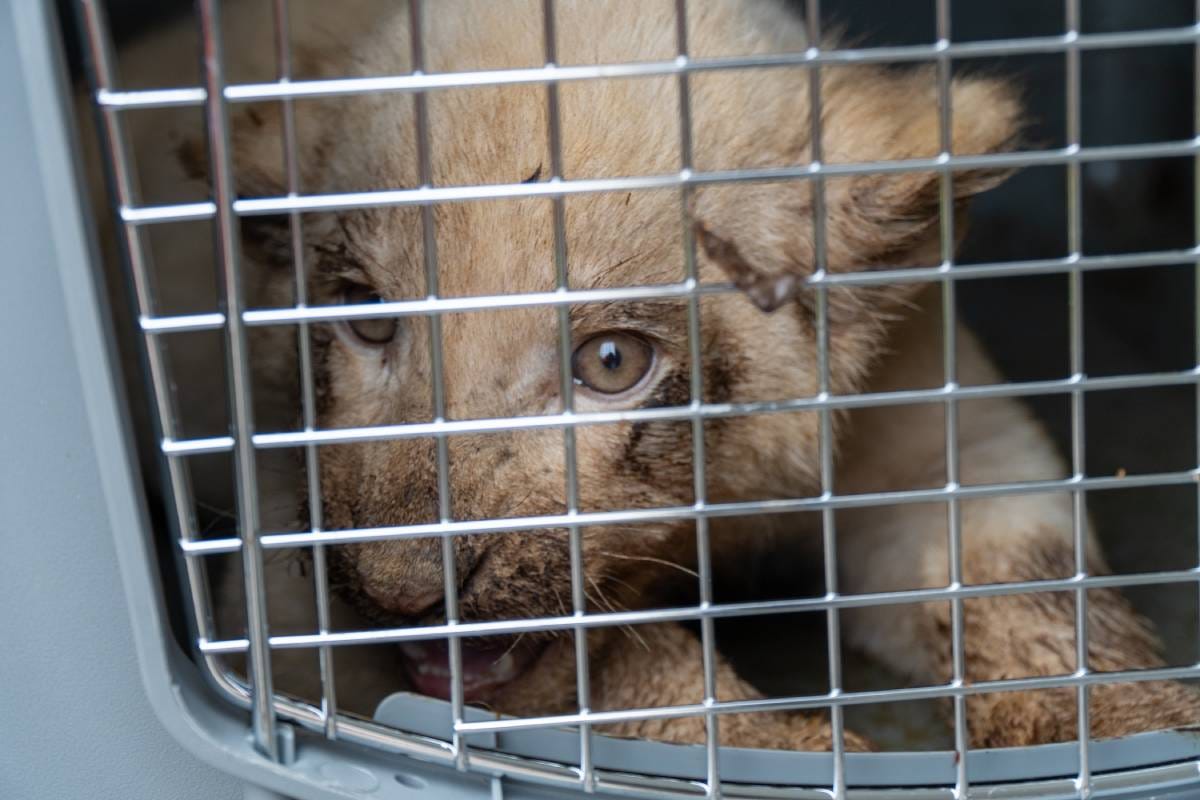The dark side of circuses: how performing animals are linked to trafficking
A deep dive from Wild Crime, the newsletter about wildlife trafficking and environmental crime
The lion cubs had been kept in filthy trailers at the circus for at least a month. When they were seized by police they were enroute to Italy, where campaigners believe they would have been sold. The seizure, which took place at the end of last year, illustrates the link between travelling circuses and the trade in wild animals.
Following their seizure from a circus operating in France, they were taken to Spain where they have been rehoused at a facility near Alicante. AAP, a Dutch animal charity, rescued all the animals – nine cubs and three adults – in one operation, the biggest in its history.
How does this link to wildlife trafficking? Performing animals have to retire, and once they do they are unlikely to be released. Campaigners say that many circuses instead use them to breed, often illegally.
The lions are now on the road to recovery, but the seizure simply illustrates the scale of the issue. I asked AAP to survey some of its partners to build a picture of the estimated number of wild animals currently performing in circuses across Europe. It’s hard (if not impossible) to get a definitive figure, but they arrived at a minimum of 1,500. These include big cats, monkeys and even hippos. AAP received 56 reports last year of potentially illegal animals linked to circuses. In 2024, it rescued 82 exotic mammals.
It is legal in some European countries for wild animals to perform in circuses, but breeding them is usually illegal. Nevertheless, some operators are able to circumvent these rules by bringing the animals to certified breeders who can create paperwork for them. My contact told me that the address the lions were enroute to is one that has come across her radar before as a conduit for selling animals once they have exhausted their use as performers.
So how does it happen? The majority of European countries have outlawed the use of wild animals in circuses, but some haven’t and there is a patchwork of regulations – sometimes even at a provincial level within countries. Four Paws, an animal rights organisation, says that 25 EU countries and seven other European countries have adopted bans or restrictions. But animal rights organisations say that, even where rules do exist, they aren’t always enforced as well as they could be. Even building a picture of the full scale of the problem is hard as circus operators often give up the animals “voluntarily” to avoid law enforcement action.
Here’s an example of how it can work. In November 2019, Belarus border guards on the country’s border with Poland became suspicious about the paperwork for a shipment of live tigers. They blocked the transport – being driven by two Italians – from passing. Inside the lorry, which was small and designed for transporting horses, were nine live tigers and the body of one which had died. At least one of the surviving tigers was suffering from severe intestinal problems from the poor diet it had been given on the trip.
Keep reading with a 7-day free trial
Subscribe to Wild Crime to keep reading this post and get 7 days of free access to the full post archives.


